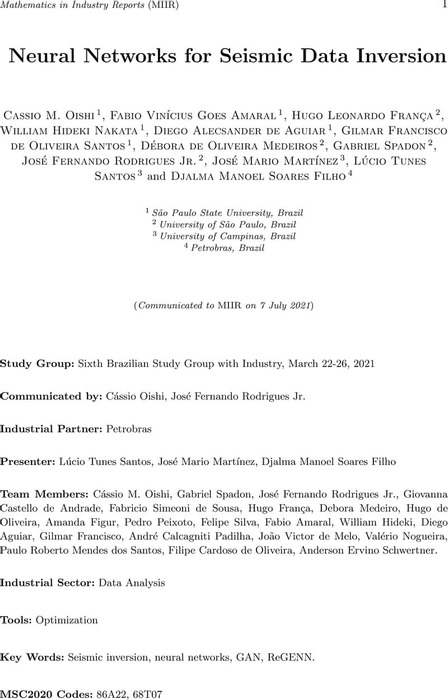Abstract
Building a velocity model is essential in seismic exploration and is used at all stages, including acquisition, processing and interpretation of seismic data. Reconstructing a subsurface image from seismic wavefields recorded at the surface (seismograms) requires accurate knowledge of the propagation velocities between the recording location and the image location at depth. Estimation of velocity models can also be used as initial models to recursively generate high-resolution velocity models through optimization algorithms. Machine learning is a field of artificial intelligence that uses computational techniques to give systems the ability to learn from a large volume of data. In particular, neural networks have been developed to reconstruct subsurface parameters, i.e., the acoustic (compressional) wave velocity model, directly from raw seismic data. Using this principle as a starting point we will use two neural network approaches to solve the problem, where a GAN neural network and a ReGENN network will be used.
Content



![Author ORCID: We display the ORCID iD icon alongside authors names on our website to acknowledge that the ORCiD has been authenticated when entered by the user. To view the users ORCiD record click the icon. [opens in a new tab]](https://www.cambridge.org/engage/assets/public/miir/logo/orcid.png)



